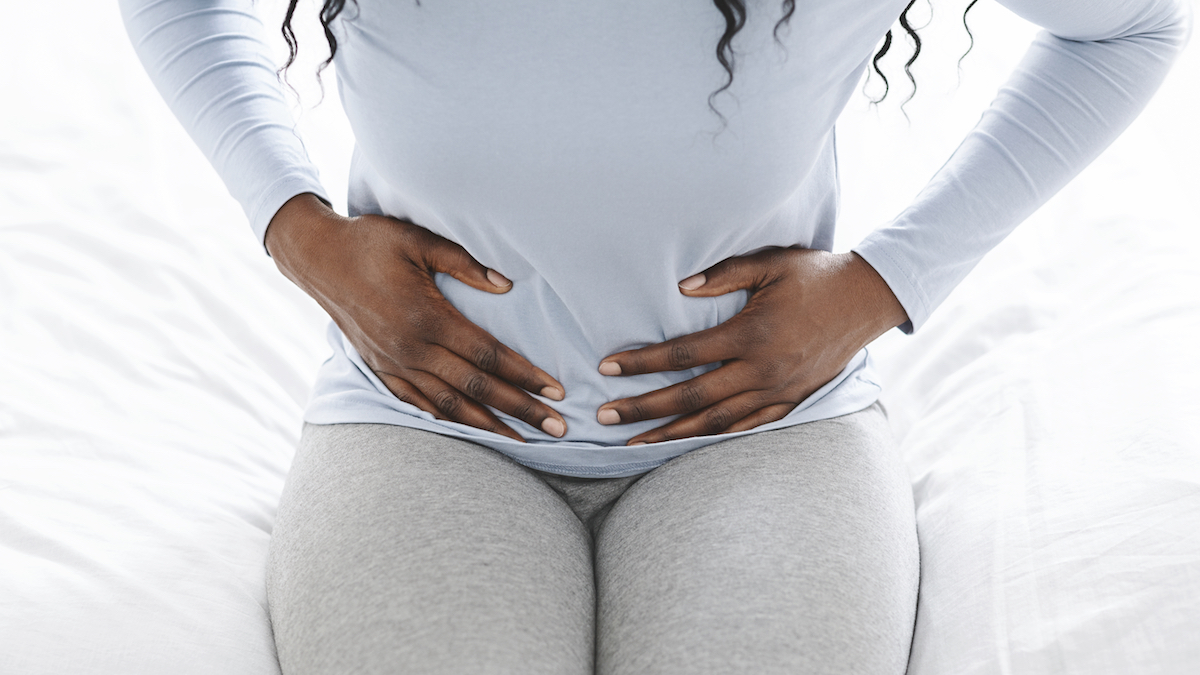By Monica Lefton, Communications Manager.
Endometriosis is a chronic gynecological disease in which tissue similar to that in the lining of the uterus (the endometrium) grows outside the uterus where it doesn’t belong, leading to lesions, pelvic pain, and other symptoms.
Each March, Endometriosis Awareness Month, is recognized globally, with a mission to raise awareness of this disease. To help spotlight the burden of endometriosis, which affects an estimated 200 million women worldwide, in the blog post below, the Society for Women’s Health Research (SWHR) shares statistics on endometriosis, resources to help individuals live well with endometriosis, and how endometriosis care can be improved in 2022 and beyond.
Prevalence of Endometriosis in the United States
Endometriosis affects an estimated one in 10 women in the United States. It can develop in any girl or woman after the onset of menstruation, but it is most commonly diagnosed in women in their 30s and 40s. Endometriosis is most prevalent among Asian women, who are more than 50% more likely to be diagnosed with endometriosis than white women. Black women are half as likely to be diagnosed with endometriosis compared to white women.
Statistics about endometriosis are often underestimated because many women are not accurately diagnosed.
The Disease Burden
The pain of endometriosis can be devastating, and an endometriosis diagnosis often comes with physical, emotional, and financial burdens. Patients living with endometriosis experience an average of 6.3 hours of lost work productivity and 4.9 hours of lost home productivity per week. Endometriosis is also considered to be the biggest cause of infertility in women.
It is common for individuals living with endometriosis to face challenges in their path to diagnosis, with three in four patients experiencing a misdiagnosis and the average patient visiting more than three physicians and facing a delay of over six years before receiving a diagnosis for endometriosis. SWHR’s paper in International Journal of Environmental Research and Public Health discusses methods for improving this all-too-common endometriosis diagnostic delay.
Living Well with Endometriosis
Despite its burden, there are ways to maintain a healthy and active lifestyle while living with endometriosis, and millions of women do so each day. Still, it is helpful to remember that each woman’s endometriosis care journey will look different. It may include keeping a period diary, speaking with your health care provider about treatment options, or remaining active through exercise. While there is no cure for endometriosis, there are many ways to manage the symptoms. Hear from a few women living well with endometriosis in this endometriosis awareness event hosted by SWHR in March 2021, and learn more about diagnosing and managing endometriosis in SWHR’s Endometriosis Toolkit: A Patient Empowerment Guide and its accompanying video series.
Improving Endometriosis Care in 2022 and Beyond
SWHR hosted a working group in 2019 to identify areas of need to improve a woman’s experience as it relates to endometriosis, and many of these goals remain relevant today. Major barriers discussed at the time included societal normalization of women’s pain and stigma around menstrual issues; lack of knowledge about the disease; and limitations of current treatment options. Recommendations shared to address these barriers included additional research into the basic biology of endometriosis; creation of new noninvasive diagnostic tools; increased disease awareness; and a patient-centric, multidisciplinary treatment approach that focuses on the whole patient and their lifestyle, rather than one symptom at a time. Read more insights from the roundtable discussion here.
SWHR continues to monitor endometriosis policy initiatives and respond to opportunities, where appropriate, including urging congressional leaders to increase federal research funding for this disease. In December 2020, SWHR successfully advocated for the inclusion of endometriosis as an eligible condition under the Department of Defense’s Peer-Reviewed Medical Research Program (PRMRP) in fiscal year 2021, which supports research to enhance well-being of military service members, veterans, retirees, and their family members (it was included in both fiscal year 2018 and fiscal year 2020 as well).
Studies suggest individuals living with endometriosis during the pandemic faced difficulties receiving benign services, accessing chronic pain treatments, and supporting their mental health.
During the COVID-19 pandemic, SWHR recognizes patients’ management challenges in endometriosis care—as health care options have become limited—and continues to push forward its policy agenda. Read more about managing endometriosis during the COVID-19 pandemic in this SWHR blog post.
This Endometriosis Awareness Month, and every month, SWHR and its partners work to advance research, policy, and education on endometriosis and improve the lives of those affected. While there is no cure in sight yet, a successful diagnosis, destigmatization, and living well with endometriosis can be in reach for all.
Are you living with endometriosis, or are you a caregiver for someone living with endometriosis? Share your story about diagnosis, seeking care, and building your endometriosis lifestyle with the SWHR team at communications[at]swhr.org. Include your full name, contact information, and a short summary of your story, and you could be featured on the SWHR website.
